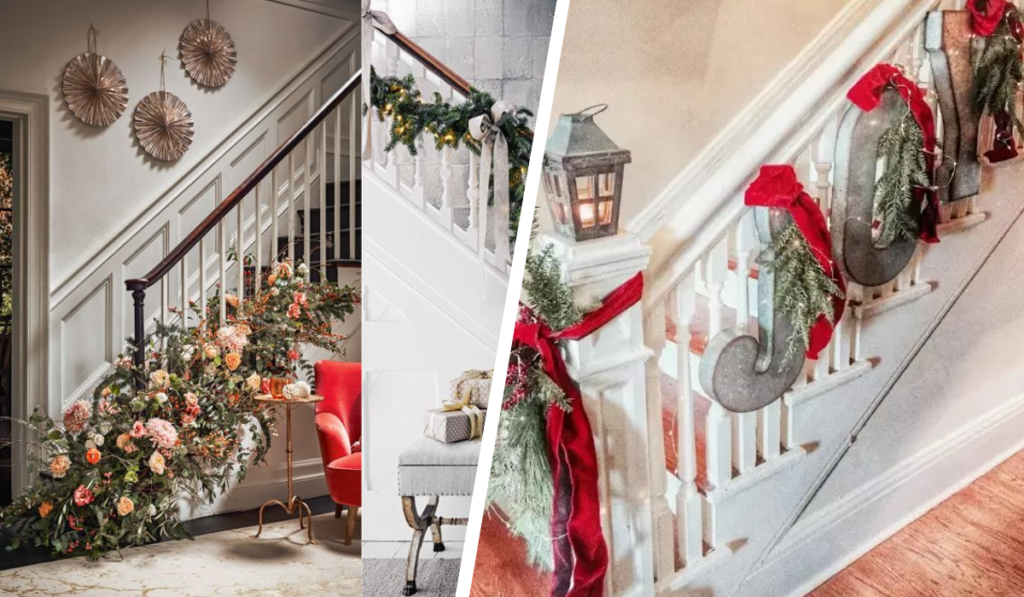Minimalism is one of the most popular interior design styles today, especially among young families and modern homes. But what exactly does it mean to have a minimalist home?
In this article, StoriesFeed will explore what minimalism is, its origins, and how you can apply its key concepts to create a minimalist home interior that feels modern, clean, and effortlessly stylish.
What is Minimalism?
Minimalism isn’t just about reducing the number of items in a room. It’s a design philosophy that focuses on simplicity, functionality, and the use of clean lines. The idea is to create spaces that are serene, balanced, and uncluttered by unnecessary decoration, ideal for a minimalist home interior.
The History of Minimalism in Interior Design
Minimalism has roots in several areas, including art, architecture, and lifestyle. But today, it’s most recognized in home interiors. It was a reaction against the ornate and decorative styles that dominated the earlier parts of the 20th century.
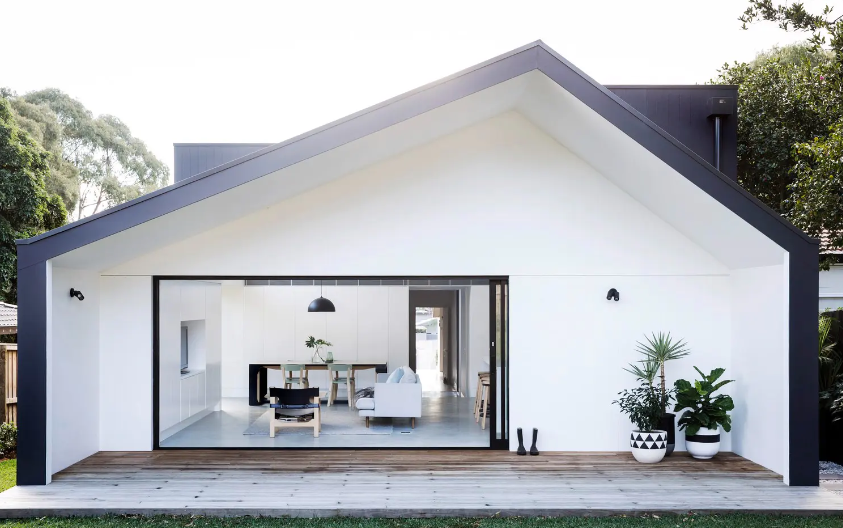
Minimalist home interior design is a style that encourages people to focus on the essentials and eliminate the excess.
The highlight of this style is simplicity but clear lines, featuring the empty spaces with open floor plans, neutral color schemes, and carefully selected furniture pieces that serve both a practical and aesthetic purpose.
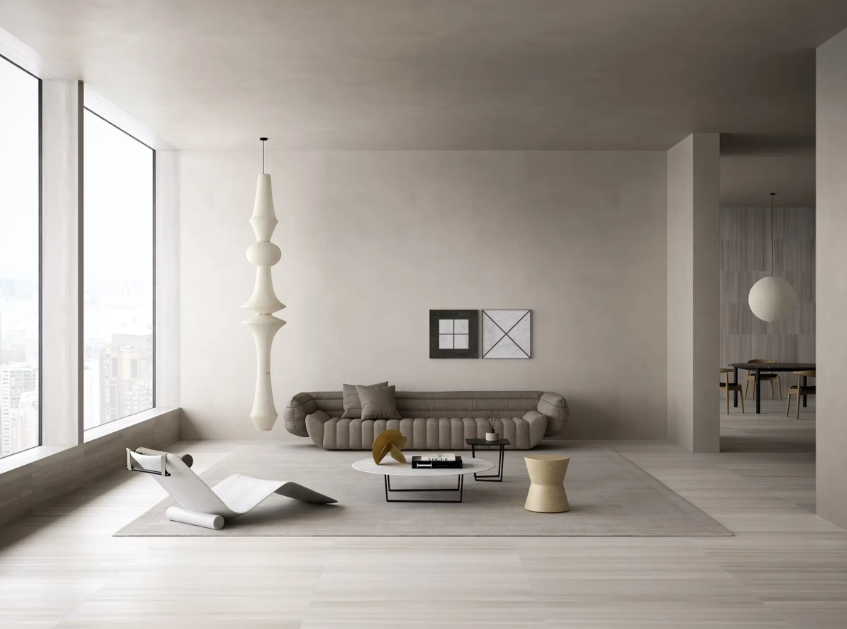
Ludwig Mies van der Rohe (1886 – 1969) was a great German architect and a pioneer of minimalism. He laid the foundation for this style by creating simple, elegant and open spaces with flat surfaces, straight lines or perpendicular lines.
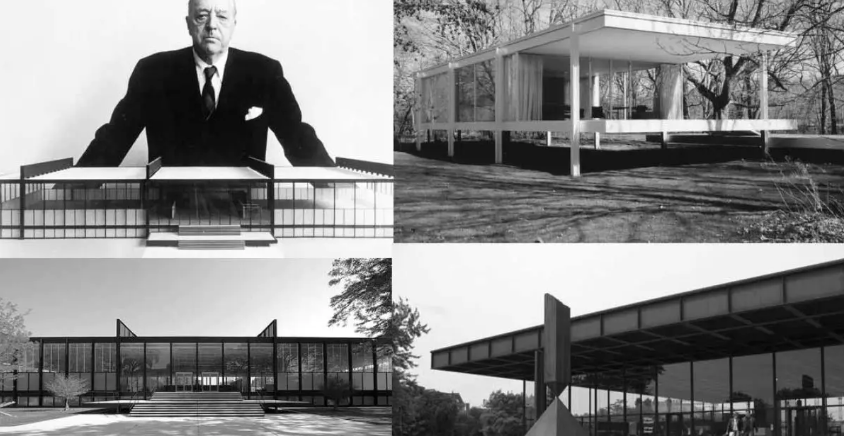
Minimalism in architecture is built on the principle of “Less is More”, meaning simplicity to the extreme, as simple as possible. However, for some people, minimalism can create a feeling of monotony and rigidity. Therefore, instead of just looking at the surface, we should expand our thinking and feel the unique beauty of this style.
In the field of interior design and construction, this style represents maximum minimalism with few details and minimized quantity, in which each detail has its own meaning to create the most harmonious and comfortable space.
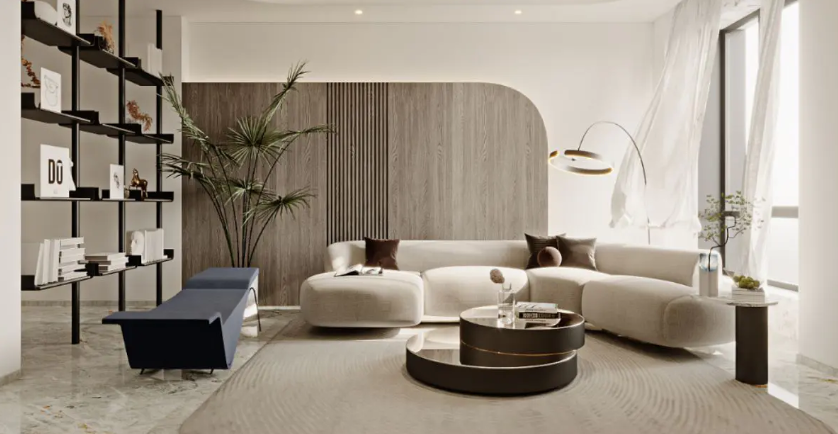
Minimalism in design became especially popular in Europe, where it started to blend with other modern trends. It later spread to the Nordic countries from the 90s onwards and to U.S., where it continued to evolve, influencing various aspects of home design.
Key Principles of Minimalist Home Interior Design
When you’re designing a minimalist home, you need to follow some key principles that guide the layout, color choices, and furnishings. These principles will help ensure your space feels open, comfortable, and functional. Here are the core elements to keep in mind:
1. Simplicity is Key
Minimalism is all about stripping away what’s unnecessary. This means you don’t need a lot of decor or furniture to create a beautiful space. Instead, focus on choosing simple, well-designed pieces that serve a purpose.
Each item in a minimalist home should be functional and contribute to the overall aesthetic. Think sleek, modern furniture that offers both form and function.
For example, a sleek sofa, a clean-lined coffee table, and a few plants are all you need for a minimalist living room.
2. Neutral Colors and Simple Textures
A minimalist home interior color palette typically includes white, black, gray, and beige. These colors create a calm, neutral backdrop that allows furniture and other elements to shine.
However, minimalist design doesn’t have to be boring. You can add pops of color through artwork, plants, or even one bold accent wall.
3. Open, Airy Spaces
Minimalism relies on open spaces. The more open a room feels, the more it embodies the minimalist principle of freedom and simplicity.
For minimalist home interiors, avoid decorating the room with too much unnecessary furniture or accessories.. Instead, focus on creating a few thoughtfully placed items that serve both an aesthetic and functional purpose.
4. Clean Lines and Functional Furniture
Instead of ornate or complex furniture, minimalist design favors clean lines, simple shapes, and straight edges. This helps create a sense of order and balance in a room.
When it comes to furniture, think of sleek, geometric shapes, such as square coffee tables, straight-legged chairs, and simple shelving units.
5. Quality Over Quantity
Minimalism doesn’t mean you have to live with empty spaces. Minimalist design focuses on fewer, higher-quality pieces rather than overcrowding a room with too many items.
The idea is to invest in furniture and decor that are not only beautiful but also functional and durable. A few well-chosen pieces can make a bigger impact than a room full of clutter.
How to Incorporate Minimalism into Your Home
Now that you know the core principles of minimalist design, let’s talk about how to apply them to your own minimalist home interior. Here are some practical tips for creating a minimalist home interior that’s both stylish and functional.
Applying the Principle
Because of the “Less is more” principle, minimalist home interior concepts are minimized to the maximum, focusing on simplicity in design details.
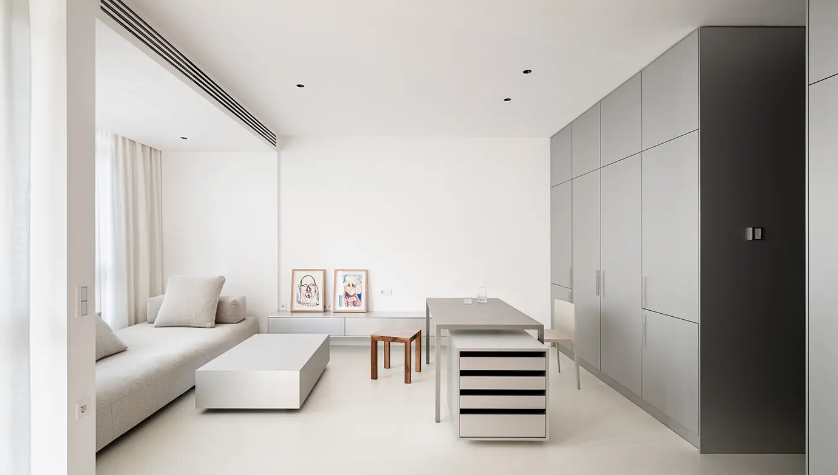
The first step in creating a minimalist home is removing items you no longer use or need. You should get rid of things that don’t have a specific purpose in your space. The more you can simplify, the better your minimalist design will feel.
Once you’ve decluttered, organize the remaining items in a way that makes them easy to access and visually appealing. Use simple storage solutions like baskets, boxes, or hidden drawers to keep things organized.
Stick to a Neutral Color Palette
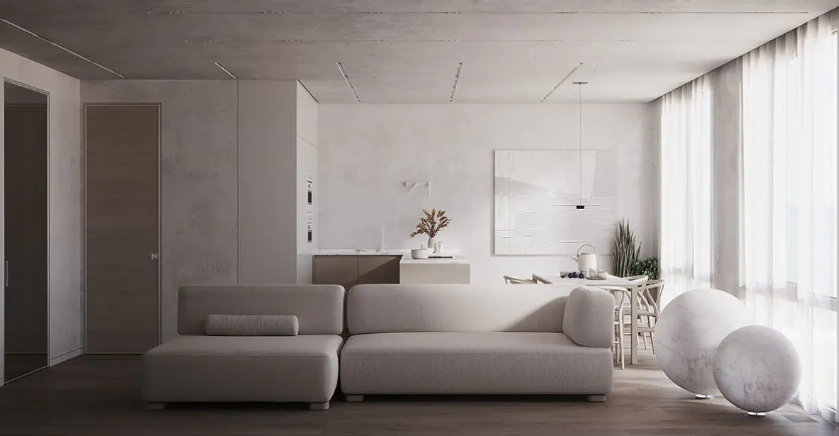
As mentioned earlier, minimalist spaces often use neutral colors like whites, grays, and beige. These tones help create a calm, harmonious atmosphere.
However, minimalist design doesn’t have to be boring. You can add pops of color through artwork, plants, or even one bold accent wall.
Use light to highlight the design
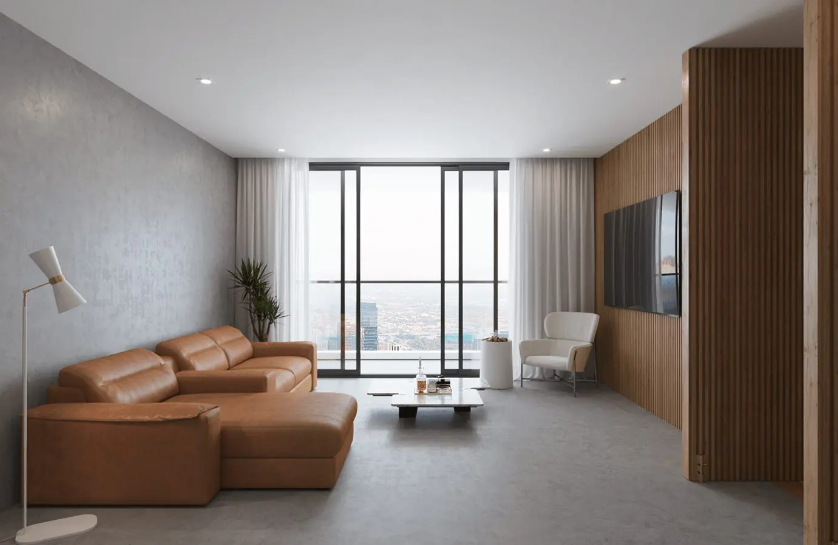
In our opinion, light is the factor that brings the best visual aesthetic effect and is also the factor that creates the highlight of minimalism interior style. Appropriate lighting design will highlight important areas through the shadow effect that highlights the shape of the furniture in the room.
Take advantage of natural light by using large windows or glass doors whenever possible as it gives a sense of freedom and comfort to the homeowner.
If you’re working with smaller spaces or rooms that don’t get much natural light, consider adding mirrors to reflect light and brighten up the space. Light-colored walls and furniture will also help maximize the effect of natural light in your home.
Use simple, optimal furniture
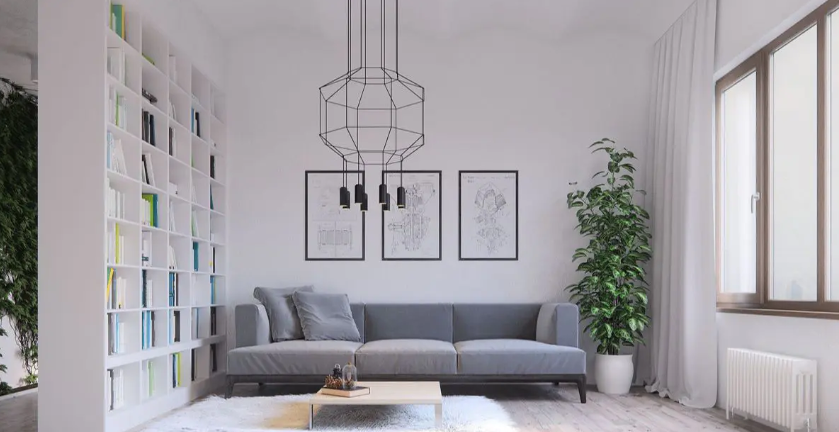
Instead of ornate or complex furniture, minimalist design favors clean lines, simple shapes, and straight edges.
In the minimalist home interior style, to avoid boring space, most of the furniture is in European style. Simple interior design, integrating many functions in the same product will help limit the arrangement of furniture, helping to save space, which is a characteristic of the minimalist style.
Limit decorative elements
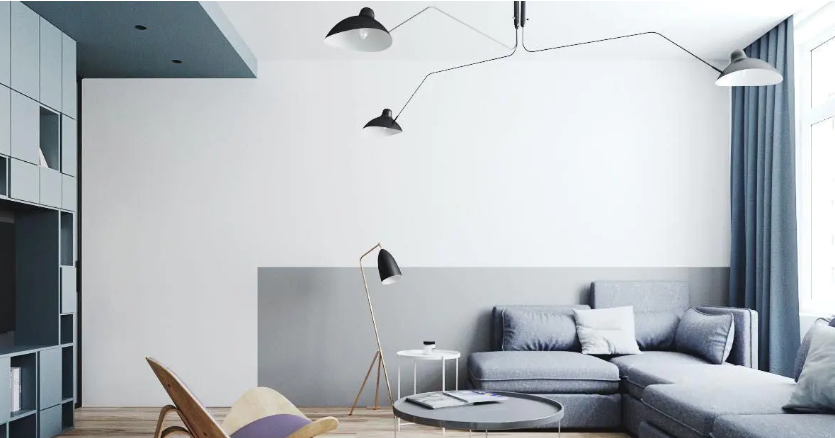
In minimalist design, less is more. You don’t need a lot of decorative items to create a beautiful space. Instead, choose a few carefully selected accessories that add meaning and function to the room. A few plants, a statement piece of art, or a simple decorative bowl can be all you need to complete the space.
Eliminate unnecessary complex details
When comparing the two factors of quantity and quality, minimalist home interior design style will always put quality first.. Therefore, Minimalis interiors often eliminate old items of unclear purpose to minimize space and reduce unnecessary clutter, bringing a more modern interior design space.
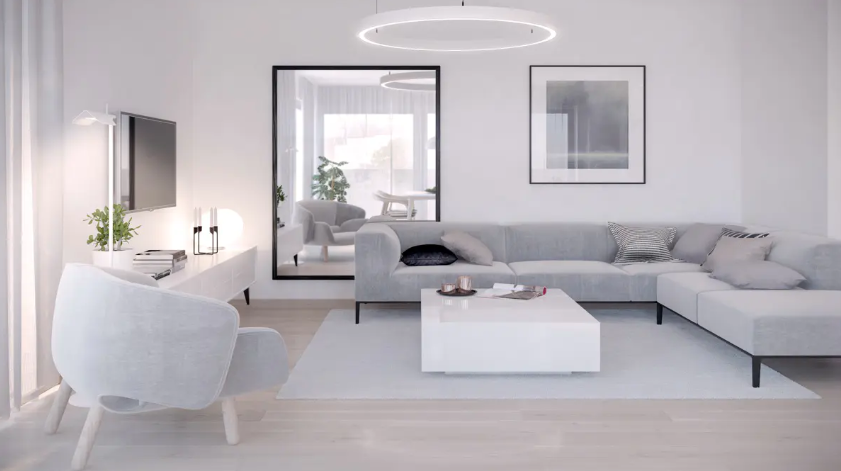
Focus on Clean Lines
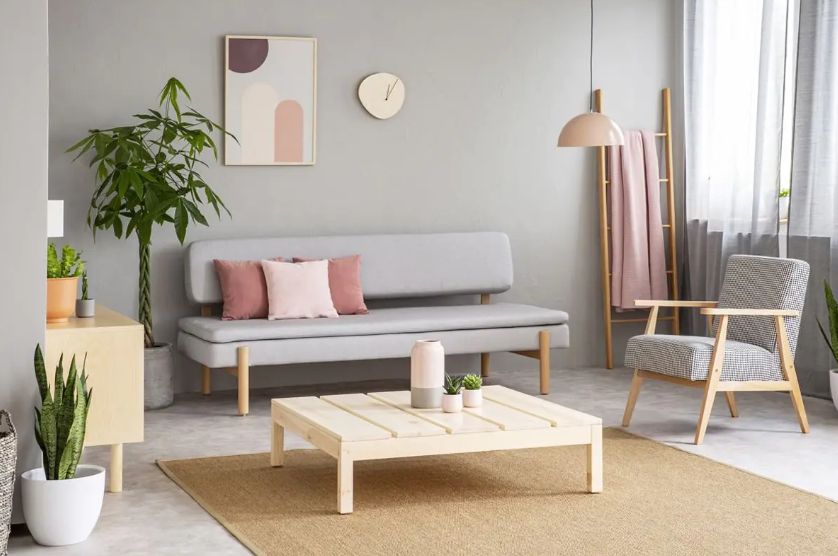
Instead of using curves and patterns, most minimalist designs will use clean, clear lines such as perpendicular lines, straight lines, etc.
Minimalist Interior Design Ideas for Each Room
Minimalist home interior style emphasizes simplicity, limiting the use of furniture while ensuring functionality. Living space is not only an aesthetic factor but also shows the homeowner’s style.
Now that you know the basics of minimalist design, let’s take a look at some specific ideas for applying this style into different rooms of your home.
Living room decoration
The living room, as part of your minimalist home interior, is often the focal point. Choose a few standout pieces of furniture, like a comfortable sofa with clean lines or a minimalist coffee table. Keep accessories to a minimum, using only the essentials.
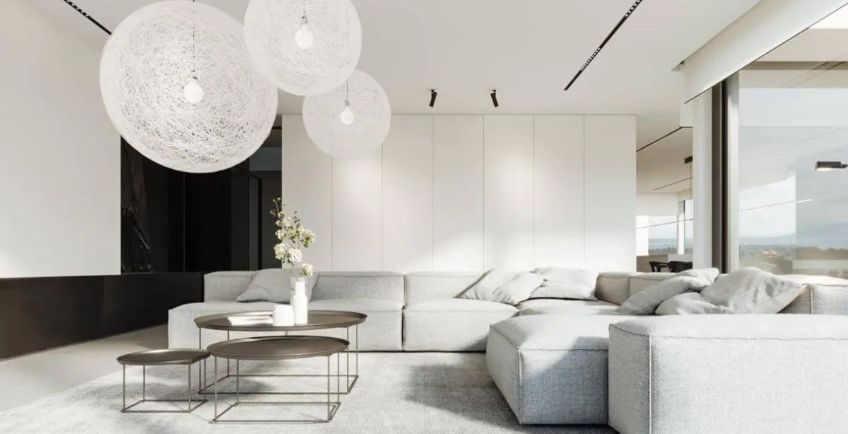
Consider using natural materials like wood, metal, or stone to add texture and warmth to the room. Large windows and sheer curtains can help let in natural light and make the space feel open.
Bedroom decoration
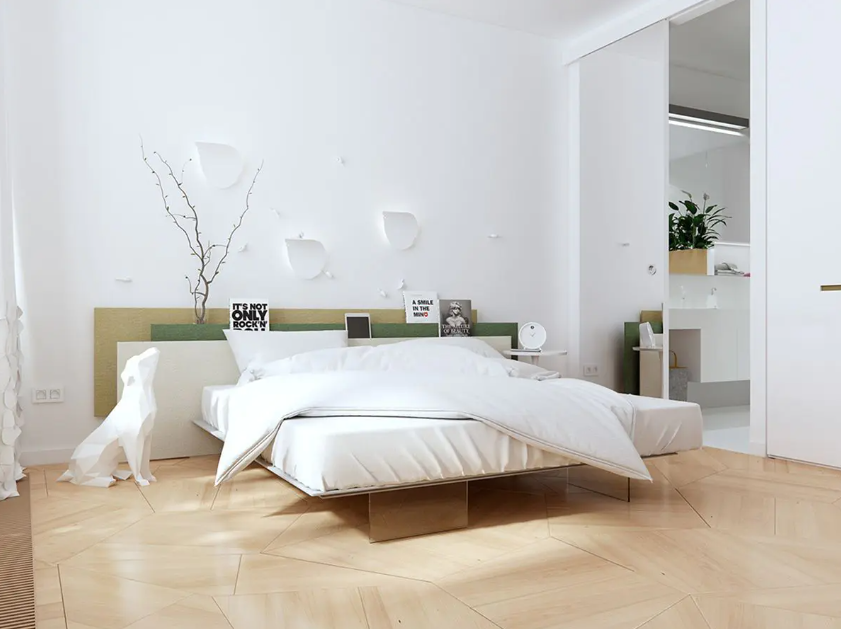
Choose a low-profile bed frame with simple bedding in neutral tones. Keep the nightstands and other furniture simple and functional to achieve a calming, serene minimalist home interior.
Limit decorative items and focus on creating a calming, serene environment with clean lines and soft lighting.
Kitchen decoration
Minimalist kitchen interior design is also often decorated simply and optimally to make the room space cleaner. In particular, kitchen islands with integrated sinks or smart kitchen cabinets are the top choices chosen by many people. Because smart devices and multifunctional kitchen tools will help the space always be neat and efficient.
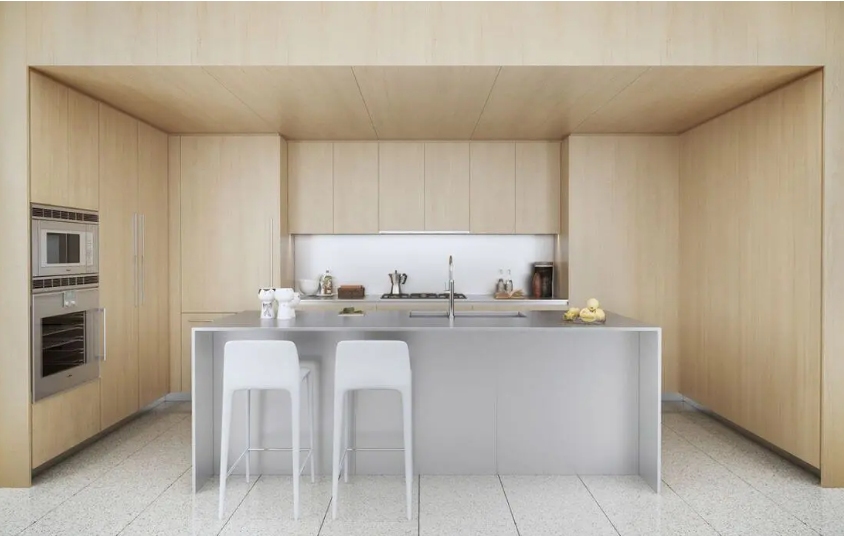
Ready to simplify your space? Whether you’re redesigning one room or your entire minimalist home interior, minimalism offers a timeless approach to interior design that will never go out of style.
Follow StoriesFeed for more inspirations on creating the perfect minimalist home interior.
